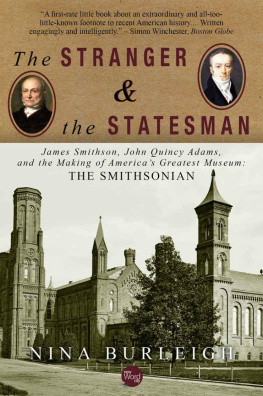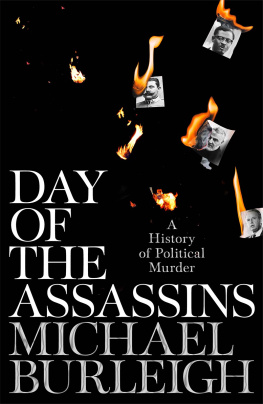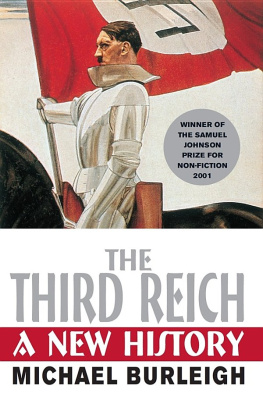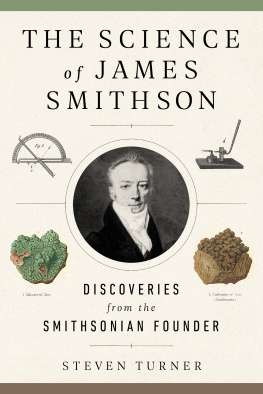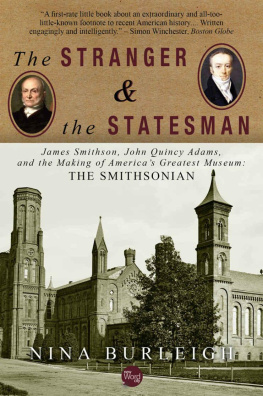Nina Burleigh - The Stranger and the Statesman: James Smithson, John Quincy Adams, and the Making of America’s Greatest Museum
Here you can read online Nina Burleigh - The Stranger and the Statesman: James Smithson, John Quincy Adams, and the Making of America’s Greatest Museum full text of the book (entire story) in english for free. Download pdf and epub, get meaning, cover and reviews about this ebook. year: 2015, publisher: New Word City, Inc., genre: History. Description of the work, (preface) as well as reviews are available. Best literature library LitArk.com created for fans of good reading and offers a wide selection of genres:
Romance novel
Science fiction
Adventure
Detective
Science
History
Home and family
Prose
Art
Politics
Computer
Non-fiction
Religion
Business
Children
Humor
Choose a favorite category and find really read worthwhile books. Enjoy immersion in the world of imagination, feel the emotions of the characters or learn something new for yourself, make an fascinating discovery.
- Book:The Stranger and the Statesman: James Smithson, John Quincy Adams, and the Making of America’s Greatest Museum
- Author:
- Publisher:New Word City, Inc.
- Genre:
- Year:2015
- Rating:3 / 5
- Favourites:Add to favourites
- Your mark:
The Stranger and the Statesman: James Smithson, John Quincy Adams, and the Making of America’s Greatest Museum: summary, description and annotation
We offer to read an annotation, description, summary or preface (depends on what the author of the book "The Stranger and the Statesman: James Smithson, John Quincy Adams, and the Making of America’s Greatest Museum" wrote himself). If you haven't found the necessary information about the book — write in the comments, we will try to find it.
It was one of the nineteenth centurys greatest philanthropic gifts - and one of its most puzzling mysteries. In 1829, a wealthy English naturalist named James Smithson left his library, mineral collection, and entire fortune to the United States of America, to found... an establishment for the increase & diffusion of Knowledge among men - even though he had never visited the United States or known any Americans. In this fascinating book, Burleigh pieces together the reclusive benefactors life, beginning with his origins as the Paris-born illegitimate son of the first Duke of Northumberland and a wild adventuress who preserved for her son a fortune through gall and determination.
The book follows Smithson through his university years and his passionate study of minerals across Europe during the chaos of the French Revolution and the Napoleonic Wars. Detailed are his imprisonment - simply for being an Englishman in the wrong place - his experiences in the gambling dens of France, and his lonely and painstaking scientific pursuits.
After Smithsons death, nineteenth-century American politicians were given the task of securing his half-million dollars - the equivalent today of $50 million - and then trying to determine how to increase and diffuse knowledge from the muddy, brawling new city of Washington. Burleigh discloses how Smithsons bequest was nearly lost due to fierce battles among many clashing Americans - Southern slavers, states rights advocates, nation-builders, corrupt frontiersmen, and Anglophobes who argued over whether a gift from an Englishman should even be accepted. She also reveals the efforts of the unsung heroes, mainly former president John Quincy Adams, whose tireless efforts finally saw Smithsons curious notion realized in 1846, with a castle housing the United States first and greatest cultural and scientific establishment.
Nina Burleigh: author's other books
Who wrote The Stranger and the Statesman: James Smithson, John Quincy Adams, and the Making of America’s Greatest Museum? Find out the surname, the name of the author of the book and a list of all author's works by series.

